- Home
- Neal Stephenson
Some Remarks: Essays and Other Writing Page 30
Some Remarks: Essays and Other Writing Read online
Page 30
So in reading Everything and More, cleverness or verbal pyrotechnics or archness are not the emotional tone that comes through to me, but a kind of open-soulness and desire to connect that were touching before, and heartbreaking after, David Foster Wallace succumbed, at the age of 46, to a cruel and incurable disease. Because of this we will not have the opportunity to enjoy and profit from many other explanations that it was in his power to supply on diverse topics, lofty and mundane, and so we must content ourselves with what he did leave behind—an impossibility given the pleasure and the insight he gave us in Everything and More, and his obvious ability to have provided much more, had fortune treated him with as much consideration as he did his readers.
The Great Simoleon Caper (1995)
Hard to imagine a less attractive life-style for a young man just out of college than going back to Bismarck to live with his parents—unless it’s living with his brother in the suburbs of Chicago, which, naturally, is what I did. Mom at least bakes a mean cherry pie. Joe, on the other hand, got me into a permanent emotional headlock and found some way, every day, to give me psychic noogies. For example, there was the day he gave me the job of figuring out how many jelly beans it would take to fill up Soldier Field.
Let us stipulate that it’s all my fault; Joe would want me to be clear on that point. Just as he was always good with people, I was always good with numbers. As Joe tells me at least once a week, I should have studied engineering. Drifted between majors instead, ended up with a major in math and a minor in art—just about the worst thing you can put on a job app.
Joe, on the other hand, went into the ad game. When the Internet and optical fiber and HDTV and digital cash all came together and turned into what we now call the Metaverse, most of the big ad agencies got hammered—because in the Metaverse, you can actually whip out a gun and blow the Energizer Bunny’s head off, and a lot of people did. Joe borrowed 10,000 bucks from Mom and Dad and started this clever young ad agency. If you’ve spent any time crawling the Metaverse, you’ve seen his work—and it’s seen you, and talked to you, and followed you around.
Mom and Dad stayed in their same little house in Bismarck, North Dakota. None of their neighbors guessed that if they cashed in their stock in Joe’s agency, they’d be worth about $20 million. I nagged them to diversify their portfolio—you know, buy a bushel basket of Krugerrands and bury them in the backyard, or maybe put a few million into a mutual fund. But Mom and Dad felt this would be a no-confidence vote in Joe. “It’d be,” Dad said, “like showing up for your kid’s piano recital with a Walkman.”
Joe comes home one January evening with a magnum of champagne. After giving me the obligatory hazing about whether I’m old enough to drink, he pours me a glass. He’s already banished his two sons to the Home Theater. They have cranked up the set-top box they got for Christmas. Patch this baby into your HDTV, and you can cruise the Metaverse, wander the Web and choose from among several user-friendly operating systems, each one rife with automatic help systems, customer-service hot lines and intelligent agents. The theater’s subwoofer causes our silverware to buzz around like sheet-metal hockey players, and amplified explosions knock swirling nebulas of tiny bubbles loose from the insides of our champagne glasses. Those low frequencies must penetrate the young brain somehow, coming in under kids’ media-hip radar and injecting the edfotainucational muchomedia bitstream direct into their cerebral cortices.
“Hauled down a mother of an account today,’’ Joe explains. “We hype cars. We hype computers. We hype athletic shoes. But as of three hours ago, we are hyping a currency.”
“What?’’ says his wife, Anne.
“Y’know, like dollars or yen. Except this is a new currency.”
“From which country?” I ask. This is like offering lox to a dog: I’ve given Joe the chance to enlighten his feckless bro. He hammers back half a flute of Dom Perignon and shifts into full-on Pitch Mode.
“Forget about countries,” he says. “We’re talking Simoleons—the smart, hip new currency of the Metaverse.”
“Is this like E-money?” Anne asks.
“We’ve been doing E-money for e-ons, ever since automated-teller machines,” Joe says, with just the right edge of scorn.
“Nowadays we can use it to go shopping in the Metaverse. But it’s still in U.S. dollars. Smart people are looking for something better.”
That was for me. I graduated college with a thousand bucks in savings. With inflation at 10% and rising, that buys a lot fewer Leinenkugels than it did a year ago.
“The government’s never going to get its act together on the budget,” Joe says. “It can’t. Inflation will just get worse. People will put their money elsewhere.”
“Inflation would have to get pretty damn high before I’d put my money into some artificial currency,” I say.
“Hell, they’re all artificial,” Joe says. “If you think about it, we’ve been doing this forever. We put our money in stocks, bonds, shares of mutual funds. Those things represent real assets—factories, ships, bananas, software, gold, whatever. Simoleons is just a new name for those assets. You carry around a smart card and spend it just like cash. Or else you go shopping in the Metaverse and spend the money online, and the goods show up on your doorstep the next morning.”
I say, “Who’s going to fall for that?”
“Everyone,” he says. “For our big promo, we’re going to give Simoleons away to some average Joes at the Super Bowl. We’ll check in with them one, three, six months later, and people will see that this is a safe and stable place to put their money.”
“It doesn’t inspire much confidence,” I say, “to hand the stuff out like Monopoly money.”
He’s ready for this one. “It’s not a handout. It’s a sweepstakes.” And that’s when he asks me to calculate how many jelly beans will fill Soldier Field.
Two hours later, I’m down at the local galaxy-class grocery store, in Bulk: a Manhattan of towering Lucite bins filled with steel-cut rolled oats, off-brand Froot Loops, sun-dried tomatoes, prefabricated s’mores, macadamias, French roasts and pignolias, all dispensed into your bag or bucket with a jerk at the handy Plexiglas guillotine. Not a human being in sight, just robot restocking machines trundling back and forth on a grid of overhead catwalks and surveillance cameras hidden in smoked-glass hemispheres. I stroll through the gleaming Lucite wonderland holding a perfect 6-in. cube improvised from duct tape and cardboard. I stagger through a glitter gulch of Gummi fauna, Boston baked beans, gobstoppers, Good & Plenty, Tart’n Tiny. Then, bingo: bulk jelly beans, premium grade. I put my cube under the spout and fill it.
Who guesses closest and earliest on the jelly beans wins the Simoleons. They’ve hired a Big Six accounting firm to make sure everything’s done right. And since they can’t actually fill the stadium with candy, I’m to come up with the Correct Answer and supply it to them and, just as important, to keep it secret.
I get home and count the beans: 3,101. Multiply by 8 to get the number in a cubic foot: 24,808. Now I just need the number of cubic feet in Soldier Field. My nephews are sprawled like pithed frogs before the HDTV, teaching themselves physics by lobbing antimatter bombs onto an offending civilization from high orbit. I prance over the black zigzags of the control cables and commandeer a unit.
Up on the screen, a cartoon elf or sprite or something pokes its head out from behind a window, then draws it back. No, I’m not a paranoid schizophrenic—this is the much-hyped intelligent agent who comes with the box. I ignore it, make my escape from Gameland and blunder into a lurid district of the Metaverse where thousands of infomercials run day and night, each in its own window. I watch an ad for Chinese folk medicines made from rare-animal parts, genetically engineered and grown in vats. Grizzly-bear gallbladders are shown growing like bunches of grapes in an amber fluid.
The animated sprite comes all the way out, and leans up against the edge of the infomercial window. “Hey!” it says, in a goofy, exuberant voice, “I’m Raster! Just spe
ak my name—that’s Raster—if you need any help.”
I don’t like Raster’s looks. It’s likely he was wandering the streets of Toontown and waving a sign saying WILL ANNOY GROWNUPS FOR FOOD until he was hired by the cable company. He begins flying around the screen, leaving a trail of glowing fairy dust that fades much too slowly for my taste.
“Give me the damn encyclopedia!” I shout. Hearing the dread word, my nephews erupt from the rug and flee.
So I look up Soldier Field. My old Analytic Geometry textbook, still flecked with insulation from the attic, has been sitting on my thigh like a lump of ice. By combining some formulas from it with the encyclopedia’s stats . . .
“Hey! Raster!”
Raster is so glad to be wanted that he does figure eights around the screen. “Calculator!” I shout.
“No need, boss! Simply tell me your desired calculation, and I will do it in my head!”
So I have a most tedious conversation with Raster, in which I estimate the number of cubic feet in Soldier Field, rounded to the nearest foot. I ask Raster to multiply that by 24,808 and he shoots back: 537,824,167,717.
A nongeek wouldn’t have thought twice. But I say, “Raster, you have Spam for brains. It should be an exact multiple of eight!” Evidently my brother’s new box came with one of those defective chips that makes errors when the numbers get really big.
Raster slaps himself upside the head; loose screws and transistors tumble out of his ears. “Darn! Guess I’ll have to have a talk with my programmer!” And then he freezes up for a minute.
My sister-in-law Anne darts into the room, hunched in a don’t-mind-me posture, and looks around. She’s terrified that I may have a date in here. “Who’re you talking to?”
“This goofy I.A. that came with your box,” I say. “Don’t ever use it to do your taxes, by the way.”
She cocks her head. “You know, just yesterday I asked it for help with a Schedule B, and it gave me a recipe for shellfish bisque.”
“Good evening, sir. Good evening, ma’am. What were those numbers again?” Raster asks. Same voice, but different inflections—more human. I call out the numbers one more time and he comes back with 537,824,167,720.
“That sounds better,” I mutter.
Anne is nonplussed. “Now its voice recognition seems to be working fine.”
“I don’t think so. I think my little math problem got forwarded to a real human being. When the conversation gets over the head of the built-in software, it calls for help, and a human steps in and takes over. He’s watching us through the built-in videocam,” I explain, pointing at the fish- eye lens built into the front panel of the set-top box, “and listening through the built-in mike.”
Anne’s getting that glazed look in her eyes; I grope for an analog analogy. “Remember The Exorcist? Well, Raster has just been possessed, like the chick in the flick. Except it’s not just Beelzebub. It’s a customer-service rep.”
I’ve just walked blind into a trap that is yawningly obvious to Anne. “Maybe that’s a job you should apply for!” she exclaims. The other jaw of the trap closes faster than my teeth chomping down on my tongue: “I can take your application online right now!” says Raster.
My sister-in-law is the embodiment of sugary triumph until the next evening, when I have a good news/bad news conversation with her. Good: I’m now a Metaverse customer-service rep. Bad: I don’t have a cubicle in some Edge City office complex. I telecommute from home—from her home, from her sofa. I sit there all day long, munching through my dwindling stash of tax-deductible jelly beans, wearing an operator’s headset, gripping the control unit, using it like a puppeteer’s rig to control other people’s Rasters on other people’s screens, all over the U.S. I can see them—the wide-angle view from their set-top boxes is piped to a window on my screen. But they can’t see me—just Raster, my avatar, my body in the Metaverse.
Ghastly in the mottled, flattening light of the Tube, people ask me inane questions about arithmetic. If they’re asking for help with recipes, airplane schedules, child-rearing or home improvement, they’ve already been turfed to someone else. My expertise is pure math only.
Which is pretty sleepy until the next week, when my brother’s agency announces the big Simoleons Sweepstakes. They’ve hired a knot-kneed fullback as their spokesman. Within minutes, requests for help from contestants start flooding in. Every Bears fan in Greater Chicago is trying to calculate the volume of Soldier Field. They’re all doing it wrong; and even the ones who are doing it right are probably using the faulty chip in their set-top box. I’m in deep conflict-of-interest territory here, wanting to reach out with Raster’s stubby, white-gloved, three-fingered hand and slap some sense into these people.
But I’m sworn to secrecy. Joe has hired me to do the calculations for the Metrodome, Three Rivers Stadium, RFK Stadium and every other N.F.L. venue. There’s going to be a Simoleons winner in every city.
We are allowed to take 15-minute breaks every four hours. So I crank up the Home Theater, just to blow the carbon out of its cylinders, and zip down the main street of the Metaverse to a club that specializes in my kind of tunes. I’m still “wearing” my Raster uniform, but I don’t care—I’m just one of thousands of Rasters running up and down the street on their breaks.
My club has a narrow entrance on a narrow alley off a narrow side street, far from the virtual malls and 3-D video-game amusement parks that serve as the cash cows for the Metaverse’s E-money economy. Inside, there’s a few Rasters on break, but it’s mostly people “wearing” more creative avatars. In the Metaverse, there’s no part of your virtual body you can’t pierce, brand or tattoo in an effort to look weirder than the next guy.
The live band onstage—jacked in from a studio in Prague—isn’t very good, so I duck into the back room where there are virtual racks full of tapes you can sample, listening to a few seconds from each song. If you like it, you can download the whole album, with optional interactive liner notes, videos and sheet music.
I’m pawing through one of these racks when I sense another avatar, something big and shaggy, sidling up next to me. It mumbles something; I ignore it. A magisterial throat-clearing noise rumbles in the subwoofer, crackles in the surround speakers, punches through cleanly on the center channel above the screen. I turn and look: it’s a heavy-set creature wearing a T-shirt emblazoned with a logo HACKERS 1111. It has very long scythe-like claws, which it uses to grip a hot-pink cylinder. It’s much better drawn than Raster; almost Disney-quality.
The sloth speaks: “537,824,167,720.”
“Hey!’’ I shout. “Who the hell are you?’’ It lifts the pink cylinder to its lips and drinks. It’s a can of Jolt. “Where’d you get that number?” I demand. “It’s supposed to be a secret.”
“The key is under the doormat,” the sloth says, then turns around and walks out of the club.
My 15-minute break is over, so I have to ponder the meaning of this through the rest of my shift. Then, I drag myself up out of the couch, open the front door and peel up the doormat.
Sure enough, someone has stuck an envelope under there. Inside is a sheet of paper with a number on it, written in hexadecimal notation, which is what computer people use: 0A56 7781 6BE2 2004 89FF 9001 C782—and so on for about five lines.
The sloth had told me that “the key is under the doormat,” and I’m willing to bet many Simoleons that this number is an encryption key that will enable me to send and receive coded messages.
So I spend 10 minutes punching it into the set-top box. Raster shows up and starts to bother me: “Can I help you with anything?”
By the time I’ve punched in the 256th digit, I’ve become a little testy with Raster and said some rude things to him. I’m not proud of it. Then I hear something that’s music to my ears: “I’m sorry, I didn’t understand you,” Raster chirps. “Please check your cable connections—I’m getting some noise on the line.”
A second figure materializes on the screen, like a digital genie:
it’s the sloth again. “Who the hell are you?” I ask.
The sloth takes another slug of Jolt, stifles a belch and says, “I am Codex, the Crypto-Anarchist Sloth.”
“Your equipment requires maintenance,” Raster says. “Please contact the cable company.”
“Your equipment is fine,” Codex says. “I’m encrypting your back channel. To the cable company, it looks like noise. As you figured out, that number is your personal encryption key. No government or corporation on earth can eavesdrop on us now.”
“Gosh, thanks,” I say.
“You’re welcome,” Codex replies. “Now, let’s get down to biz. We have something you want. You have something we want.”
“How did you know the answer to the Soldier Field jelly-bean question?”
“We’ve got all 27,” ’ Codex says. And he rattles off the secret numbers for Candlestick Park, the Kingdome, the Meadowlands . . .
“Unless you’ve broken into the accounting firm’s vault,” I say, “there’s only one way you could have those numbers. You’ve been eavesdropping on my little chats with Raster. You’ve tapped the line coming out of this set-top box, haven’t you?”

 Zodiac: The Eco-Thriller
Zodiac: The Eco-Thriller The Mongoliad: Book One
The Mongoliad: Book One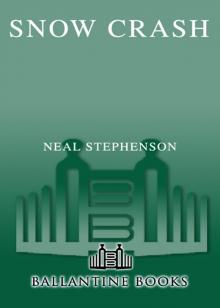 Snow Crash
Snow Crash The Confusion: Volume Two of the Baroque Cycle
The Confusion: Volume Two of the Baroque Cycle The Rise and Fall of D.O.D.O.
The Rise and Fall of D.O.D.O. The Diamond Age: Or, a Young Lady's Illustrated Primer
The Diamond Age: Or, a Young Lady's Illustrated Primer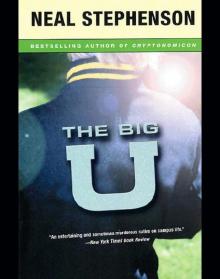 The Big U
The Big U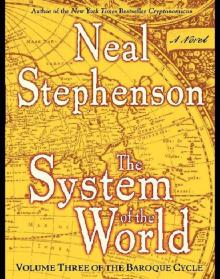 The System of the World: Volume Three of the Baroque Cycle
The System of the World: Volume Three of the Baroque Cycle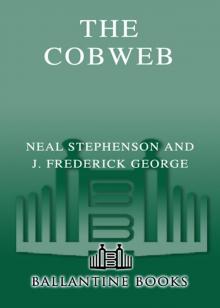 The Cobweb
The Cobweb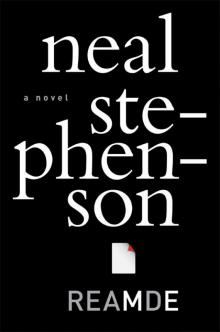 Reamde
Reamde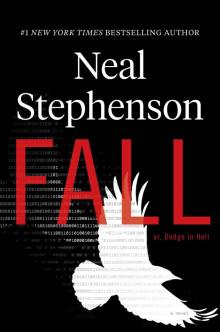 Fall; or, Dodge in Hell
Fall; or, Dodge in Hell Interface
Interface Quicksilver
Quicksilver The Mongoliad: Book Three
The Mongoliad: Book Three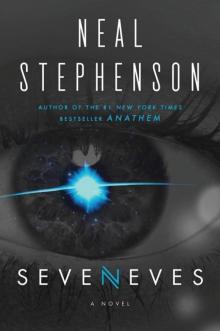 Seveneves
Seveneves Atmosphæra Incognita
Atmosphæra Incognita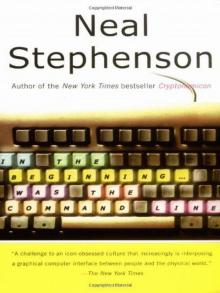 In the Beginning...Was the Command Line
In the Beginning...Was the Command Line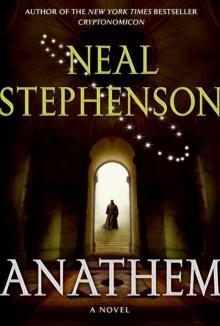 Anathem
Anathem The Rise and Fall of D.O.D.O.: A Novel
The Rise and Fall of D.O.D.O.: A Novel The Mongoliad: Book Two
The Mongoliad: Book Two Diamond Age or a Young Lady's Illustrated Primer
Diamond Age or a Young Lady's Illustrated Primer THE System OF THE WORLD
THE System OF THE WORLD The Mongoliad: Book One tfs-1
The Mongoliad: Book One tfs-1 Some Remarks: Essays and Other Writing
Some Remarks: Essays and Other Writing Zodiac
Zodiac Spew
Spew The Baroque Cycle: Quicksilver, the Confusion, and the System of the World
The Baroque Cycle: Quicksilver, the Confusion, and the System of the World The Diamond Age
The Diamond Age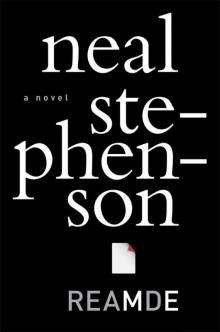 Reamde: A Novel
Reamde: A Novel In the Kingdom of Mao Bell
In the Kingdom of Mao Bell Mother Earth Mother Board
Mother Earth Mother Board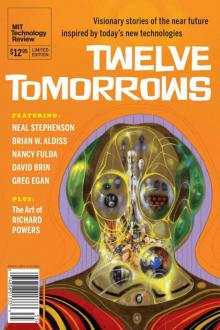 Twelve Tomorrows - Visionary stories of the near future inspired by today's technologies
Twelve Tomorrows - Visionary stories of the near future inspired by today's technologies The Confusion
The Confusion The Great Simoleon Caper
The Great Simoleon Caper The Mongoliad: Book Three tfs-3
The Mongoliad: Book Three tfs-3